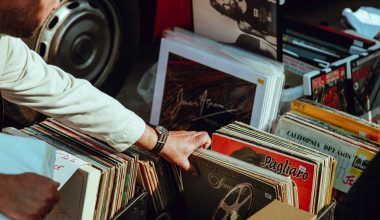Imagine a world where music wasn’t celebrated on the grand stage it is today. Before 1959, there wasn’t a big, official event to honor the best songs, albums, or artists. Then came the 1st Grammy Awards, the first-ever ceremony to officially celebrate musical talent. It was a night filled with excitement, elegance, and the sounds of some of the most iconic music of the time.
The first Grammys weren’t anything like the grand, glittering ceremonies we see today. There were no televised performances, no social media buzz, and no millions of fans watching live. It was a small, private event held in two places at once—Beverly Hills, California, and New York City. But that simple start marked the beginning of something truly magical.
What Were the Grammys Meant For?
The Grammy Awards were created because the music industry needed a way to say “thank you” to the people who made great music. In the late 1950s, music was booming. Rock ‘n’ roll was becoming popular, jazz was still king, and classical music was timeless. There was so much talent that the National Academy of Recording Arts and Sciences (NARAS) thought, “Why don’t we celebrate this?”
The Grammy got its name from the gramophone, the old machine used to play records. Even the Grammy trophy is shaped like a golden gramophone, reminding us of the rich history of music recording.
The First Ceremony: Small but Special
The 1st Grammy Awards were held on May 4, 1959. The event was unique because it took place in two different cities at the same time: the Beverly Hilton Hotel in Los Angeles and the Park Sheraton Hotel in New York. Why two locations? It was a practical decision to make it easier for artists from both coasts to attend.
The ceremony itself was small, with only around 150 people in attendance. Compare that to the thousands who now attend the Grammys, and you’ll see how much it has grown. Although the first Grammys weren’t televised, they were still considered a big deal by those in the music world.
What Made the 1st Grammy Awards Unique?
The first Grammys were all about recognizing incredible talent in a variety of music genres. There were only 28 categories, much fewer than the 80+ categories we see today. The awards covered everything from pop and jazz to country and classical music.
The winners received a gramophone-shaped trophy, symbolizing the roots of music recording. And while the event itself was simple, the winners were thrilled to be part of something so meaningful.
The Big Winners of the Night
Who won at the 1st Grammy Awards? Let’s take a look at some of the most memorable winners:
- Record of the Year: “Nel Blu Dipinto Di Blu (Volare)” by Domenico Modugno
- This catchy Italian song was loved worldwide. Even today, it’s considered a timeless classic.
- Album of the Year: “The Music from Peter Gunn” by Henry Mancini
- This jazz album was the soundtrack to a popular TV show and showcased how music could tell a story.
- Song of the Year: “Nel Blu Dipinto Di Blu (Volare)” by Domenico Modugno
- Yes, the same song! It was a huge hit and deserved all the praise it got.
- Best New Artist: Bobby Darin
- Bobby was just starting his career but went on to become a legend with hits like “Mack the Knife.”
- Best Country & Western Performance: “Tom Dooley” by The Kingston Trio
- This song was a perfect example of how storytelling and music can come together beautifully.
Why the 1st Grammy Awards Were Important
The 1st Grammy Awards were more than just a celebration of music. They were a way to recognize the hard work and creativity of artists, producers, and songwriters. Winning a Grammy wasn’t just about getting a trophy—it was a statement. It meant that your music was not just popular, but also appreciated for its quality and impact.
This event also paved the way for the Grammys to grow into the massive global event it is today. Back then, no one could have imagined how influential the Grammys would become.
Fun Facts About the First Grammys
Here are some interesting facts about the 1st Grammy Awards:
- Split Ceremony: Having the ceremony in two cities was a one-time thing. After that, the Grammys were held in just one location each year.
- No Telecast: The ceremony wasn’t broadcast on TV. It wasn’t until 1971 that the Grammys went live on air.
- Fewer Categories: With only 28 awards, the first Grammys were much shorter compared to today’s ceremonies.
How Music Has Evolved Since 1959
When the first Grammys happened, music was very different. Rock ‘n’ roll was just gaining traction, and artists like Elvis Presley were becoming household names. Jazz was still a dominant genre, and classical music had a strong presence. Fast forward to today, and the Grammy Awards now celebrate a wide variety of genres, from hip-hop and electronic to Latin and world music.
The Grammys have also adapted to modern trends, adding categories for music videos, streaming-only albums, and even online performances.
Why We Still Love the Grammys
The Grammys have come a long way since 1959, but they still serve the same purpose: to honor the best in music. Artists dream of holding that golden gramophone because it symbolizes excellence and achievement. For fans, the Grammys are a chance to see their favorite artists celebrated on a global stage.
The 1st Grammy Awards might have been a modest beginning, but they started something that would grow to unite music lovers from all over the world.
Conclusion: A Legacy That Started Small
The 1st Grammy Awards were a humble start to what is now the biggest night in music. They brought recognition to artists who shaped the sound of their time and set a standard for celebrating creativity and talent.
As we look back at that historic night in 1959, it’s amazing to see how much the Grammys have grown and how they continue to honor the artists who make our lives richer with their music.
Let’s remember the 1st Grammy Awards not just as the beginning of a tradition, but as a celebration of the universal language of music—a language that connects us all.
Related Articles:
For further reading, explore these related articles:
- Good For U Lyrics – A Song About Heartbreak, Anger, and Moving On
- G-Eazy No Limit: A Simple Guide to This Epic Song Everyone Loves
For additional resources on music marketing and distribution, visit DMT RECORDS PRIVATE LIMITED.






